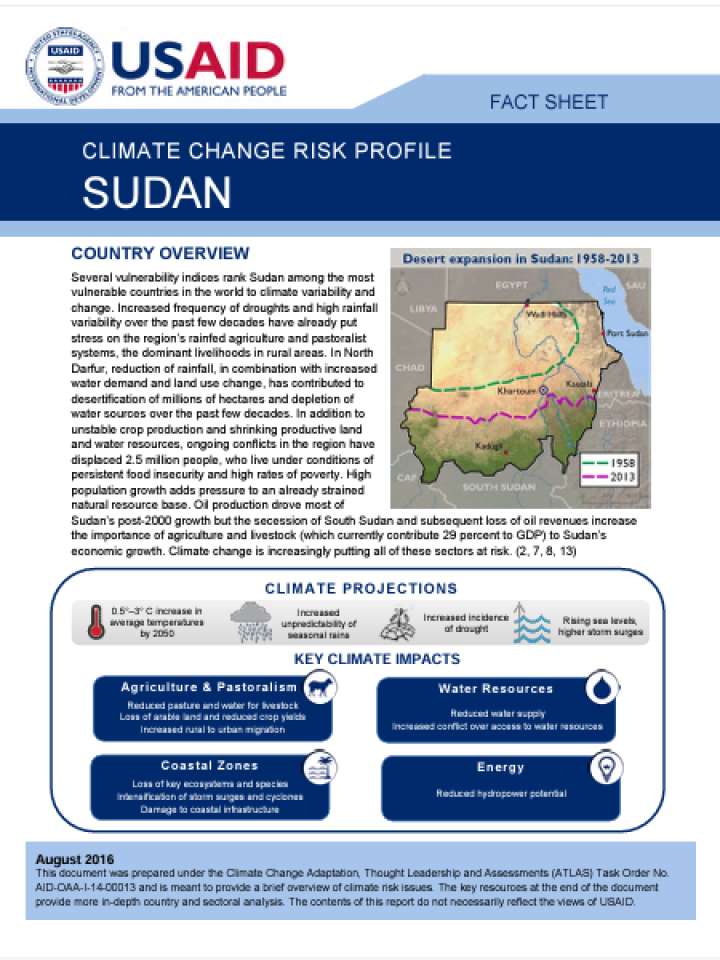Climate change risk profile Sudan
Several vulnerability indices rank Sudan among the most vulnerable countries in the world to climate variability and change. Increased frequency of droughts and high rainfall variability over the past few decades have already put stress on the region’s rainfed agriculture and pastoralist systems, the dominant livelihoods in rural areas. In North Darfur, reduction of rainfall, in combination with increased water demand and land use change, has contributed to desertification of millions of hectares and depletion of water sources over the past few decades.
Sudan has a variable climate ranging from desert and semi-desert areas in the north to arid savannah in the east, west and south, with seasonal rains in central areas between El Obeid and Atbara. Mean annual temperatures vary between 26ºC and 32ºC across the country. The most extreme temperatures are found in the far north, where summer temperatures can often exceed 43ºC and sandstorms blow across the Sahara Desert from April to September. The main rainy season is from May to October, with precipitation ranging between less than 50 mm in the extreme north to more than 1500 mm in the extreme south.
Explore further
